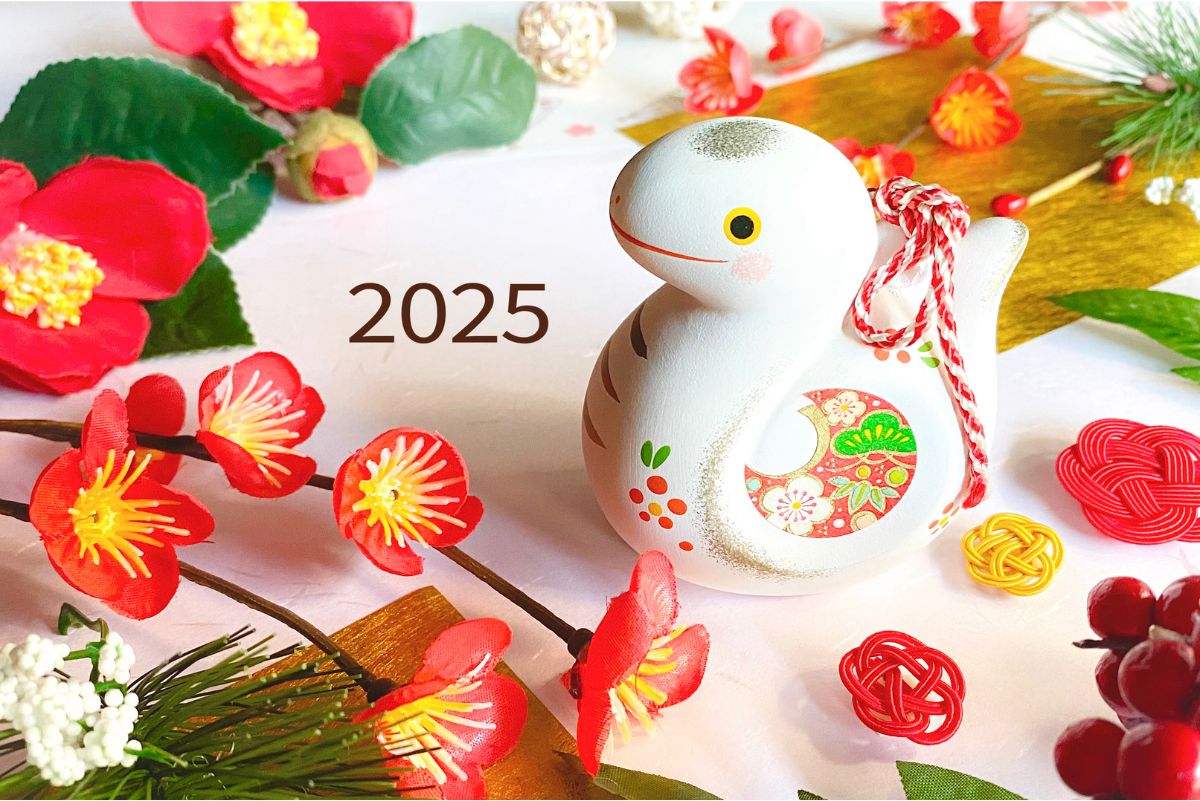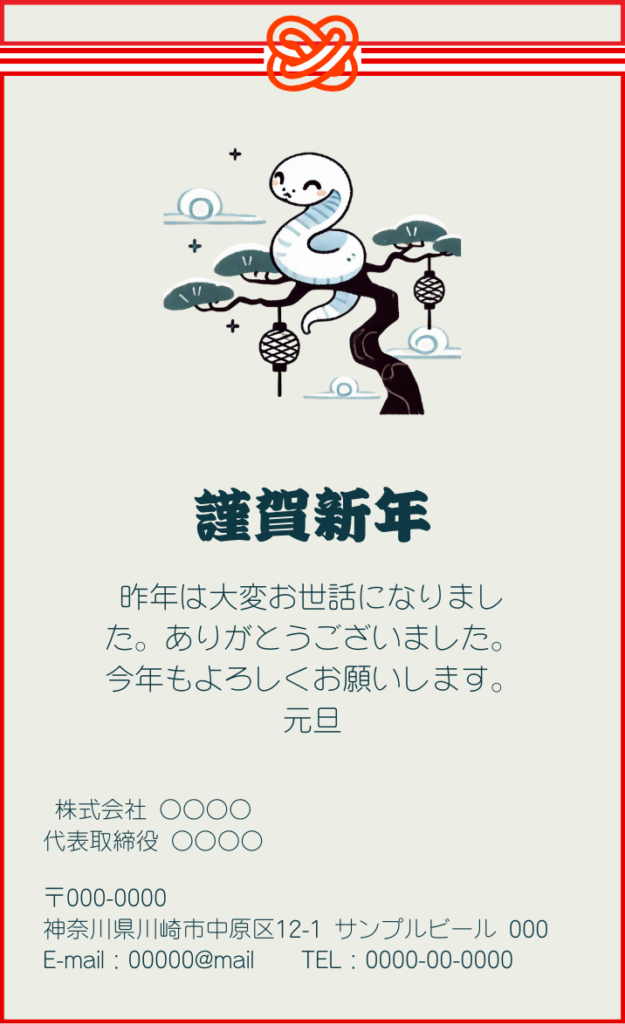Global Career Guide


- Jobs in Japan @ Daijob.com
- Global Career Guide
- Working in Japan
- Craft Connections in Japan with Nengajo, new year greeting cards.
Craft Connections in Japan with Nengajo, new year greeting cards.

Nengajo (年賀状 / ねんがじょう), or New Year’s cards, are an integral part of Japanese culture. These special postcards are exchanged among family, friends, colleagues, and acquaintances to convey seasonal greetings and well wishes for the coming year. Sending and receiving nengajo is a deeply ingrained tradition that reflects the importance of social connections and the spirit of the New Year in Japanese society. These cards serve as a heartfelt tradition that embodies hope, connection, and artistry. Beyond mere greetings, nengajo symbolize the warmth and goodwill shared during the New Year season, fostering strong social bonds and expressing deep sentiments. In this comprehensive guide, we delve into the history, evolution, and cultural significance of nengajo, exploring its enduring charm and relevance in modern times.
The Origins and Evolution
Originally crafted as scrolls during the Heian period, nengajo has transformed into intricately designed cards that convey personal wishes and seasonal greetings. The tradition of sending nengajo began as a way to express good wishes and strengthen social bonds, evolving over centuries to become an art form that combines tradition with innovation. Discover how the art of nengajo creation has adapted to changing times while preserving its cultural essence and significance.
- ●Early Origins: Evidence suggests that early forms of New Year’s greetings can be traced back to the Heian period (794-1185). During this era, noblemen and court officials exchanged written messages and poems to convey their best wishes for the New Year. These early forms of greetings often featured elegant calligraphy and poetic expressions, reflecting the refined aesthetic of the Heian court.
- ●The Rise of Washi Paper: The invention of washi, a traditional Japanese paper made from plant fibers, played a significant role in the evolution of New Year’s greetings. The availability of high-quality paper made it easier and more affordable to create and exchange written messages.
- ●The Edo Period (1603-1868): During the Edo period, the exchange of New Year’s greetings became more widespread among the general population. As society became more interconnected, people began to send greetings to a wider circle of friends, family, and acquaintances.
- ●The Meiji Era (1868-1912): The advent of modern postal services in the Meiji era significantly facilitated the widespread exchange of nengajo. The establishment of a reliable postal system made it easier and faster to send cards across the country. This period also saw the emergence of mass-produced nengajo with standardized formats, making them more accessible to the general public.
- ●The Modern Era: Today, nengajo continue to play a vital role in Japanese society. While the format and content of nengajo have evolved over time, the underlying spirit of expressing gratitude and wishing for a prosperous year remains unchanged. The rise of digital technology has introduced new forms of nengajo, such as e-cards and social media greetings, but the tradition of exchanging physical cards remains strong.
The Significance in Modern Japan
Beyond simply conveying greetings, nengajo serve several important functions in contemporary Japanese society:
- ●Maintaining Social Connections: In today’s fast-paced and increasingly digital world, nengajo provides a tangible way to maintain and strengthen relationships with family, friends, and acquaintances. It’s a personal and thoughtful way to stay connected with loved ones, especially those who may live far away.
- ●Showcasing Creativity and Personal Expression: Nengajo offer a canvas for creativity. People often select cards with unique designs, write heartfelt messages, and even include personal photographs. This allows for a degree of self-expression and individuality.
- ●Reflecting on the Past Year and Looking Forward: Writing and sending nengajo provides an opportunity to reflect on the past year, express gratitude for the good times, and learn from the challenges. It’s a moment of introspection and a chance to set intentions for the year ahead.
- Cultural Exchange: For foreigners living in Japan, sending and receiving nengajo is a valuable cultural experience. It offers a unique window into Japanese customs and traditions, fostering deeper connections with the local community and enhancing their understanding of Japanese culture.
- ●Cultural Exchange: For foreigners living in Japan, sending and receiving nengajo is a valuable cultural experience. It offers a unique window into Japanese customs and traditions, fostering deeper connections with the local community and enhancing their understanding of Japanese culture.
The Art of Crafting Nengajo:
Creating a nengajo is a labor of love that allows individuals to infuse their personality and sentiments into each card. From selecting the perfect theme that resonates with the recipient to adding decorative elements that enhance the visual appeal, every step in the crafting process reflects creativity and care. By engaging in the art of nengajo creation, individuals can share their heartfelt wishes in a personalized and meaningful way, fostering connections and spreading joy during the New Year season.

Themes and Designs:
Nengajo designs encompass a wide range of themes inspired by nature, traditional motifs, and contemporary aesthetics. Each card tells a unique story through its design elements, evoking the spirit of the season and the sender’s sentiments. Whether adorned with vibrant illustrations, elegant calligraphy, or intricate patterns, nengajo designs capture the essence of celebration and renewal, offering a glimpse into Japan’s rich artistic heritage and cultural traditions.
Writing Heartfelt Messages
Crafting a heartfelt message is at the core of nengajo, allowing senders to convey their warm wishes and hopes for the New Year. From simple expressions of gratitude to poetic verses that inspire joy and optimism, the words written on a nengajo hold the power to uplift spirits and strengthen connections. By choosing words that resonate with both the sender and recipient, nengajo messages create a sense of warmth and goodwill that transcends distance and time.
Decorative Touches and Personalization
Enhancing nengajo with decorative touches adds a personal and artistic flair to each card. Whether incorporating hand-drawn illustrations, traditional motifs, or intricate designs, these decorative elements elevate the visual appeal of nengajo and make them unique expressions of creativity and thoughtfulness. By personalizing each card with care and attention to detail, senders can create a lasting impression and convey their heartfelt wishes in a memorable way.
Etiquettes to keep in mind when sending Nengajo
- ●Include your full name and address on the back of the card.
- ●Use polite and respectful language.
- ●Avoid writing negative or depressing messages.
- ●Send cards early: To ensure timely delivery, it’s recommended to send nengajo by December 25th. The Japanese Postal Service offers a special service for nengajo, ensuring early delivery on New Year’s Day.
Refer to Japan Post’s website for more details.
Nengajo in the Digital Age
While traditional paper nengajo remain popular, digital nengajo are gaining popularity. E-cards and social media platforms provide alternative ways to send New Year’s greetings. Many online services allow users to create personalized e-cards with digital illustrations, messages, and even short video clips.
However, for many Japanese people, the tradition of sending physical nengajo holds a special significance. The act of selecting a card, writing a personal message, and mailing it to loved ones is seen as a meaningful gesture of respect and appreciation.
The Year of the…
Each year is associated with an animal. For example, 2024 is the Year of the Dragon. Many cards feature the animal of the current and upcoming year. 2025 will be the year of the Snake! The Snake is associated with wisdom, charm, elegance, and transformation.
Let’s transform your career in 2025 with Daijob.com! With a simple 2-minute registration, get access to more than 10,000 jobs right away! Find your next role in Japan and transform your career now!
Discover Your Next Role in Japan. Access more than 10,000 jobs for free!
Take Away
Nengajo are more than just greeting cards; they are a reflection of Japanese culture, tradition, and social values. By participating in this unique custom, you can deepen your understanding of Japanese society and build stronger relationships with the people around you. Sending and receiving nengajo is a valuable cultural experience that fosters a sense of community and connection.



